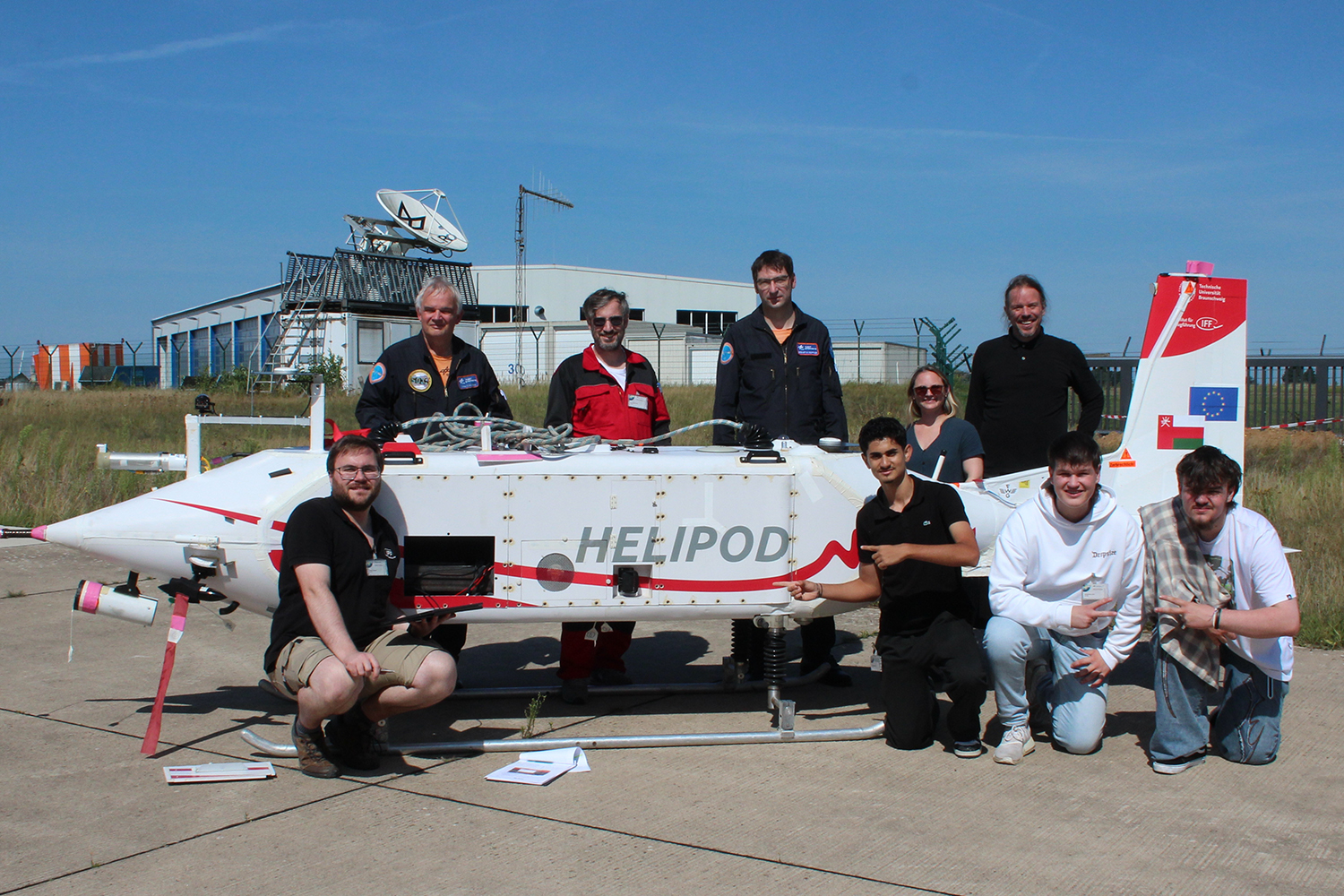Helicopter test flights with HELiPOD in Braunschweig Quick and easy testing of a new environmental monitoring sensor
The activity of plants can be observed through fluorescence. It can also be used to assess the health of plants, for example whether they are getting enough water and nutrients. A new sensor for measuring fluorescence is currently being tested in flight, with the aim of later validating the satellite data. This is being done using a helicopter towed probe from Technische Universität Braunschweig, which is collecting data on test flights with the German Aerospace Center (DLR).

DLR pilots Sebastian Soffner and Uwe Göhmann, employees of the Institute of Flight Guidance Falk Pätzold, Barbara Harm-Altstädter, Sven Bollmann, Andreas Schlerf, and students of the Nibelungen-Realschule: Muhammad Dalli, Liam Bennett Nieschulze, Tavis Wiechmann). Photo credit: TU Braunschweig
Plants that carry out photosynthesis, i.e. produce oxygen and sugars from carbon dioxide, water and sunlight, can be observed at work through fluorescence: The more actively a plant is metabolizing substances, the more it glows in certain parts of the light spectrum. Fluorescence data can be recorded using a device developed by JB Hyperspectral Devices for the European Space Agency (ESA). This was installed on the HELiPOD helicopter towed probe from the Institute of Flight Guidance at TU Braunschweig.

The DLR Bo105 research helicopter carries the HELiPOD as an external load. Photo credit: Sven Bollmann/TU Braunschweig
Using a DLR Bo105 helicopter, the HELiPOD flies over various fields and forests under a cloudless sky. From an altitude of several hundred metres, the device looks down on the ground and records the fluorescence. The HELiPOD also measures other values such as air temperature and humidity, carbon dioxide levels and vibrations. This makes it possible to check how these influences affect the calculation of fluorescence and the condition of the vegetation.
“With the HELiPOD and the DLR helicopter, we can plan flexible flight paths and fly over fields and forests with different vegetation,” explains Dr. Dirk Schüttemeyer from ESA.
“The HELiPOD offers many opportunities to use a new sensor and to record environmental conditions at the same time. We are pleased to have DLR as an experienced partner for external load flights, allowing us to carry out a straightforward test,” says Prof. Astrid Lampert from the Institute of Flight Guidance at TU Braunschweig.
The tests are part of the European Space Agency’s (ESA) Fluorescence Explorer satellite mission, which will provide new insights into photosynthesis in vegetation from 2026. The measurements will help detect plant health and provide more targeted support.
